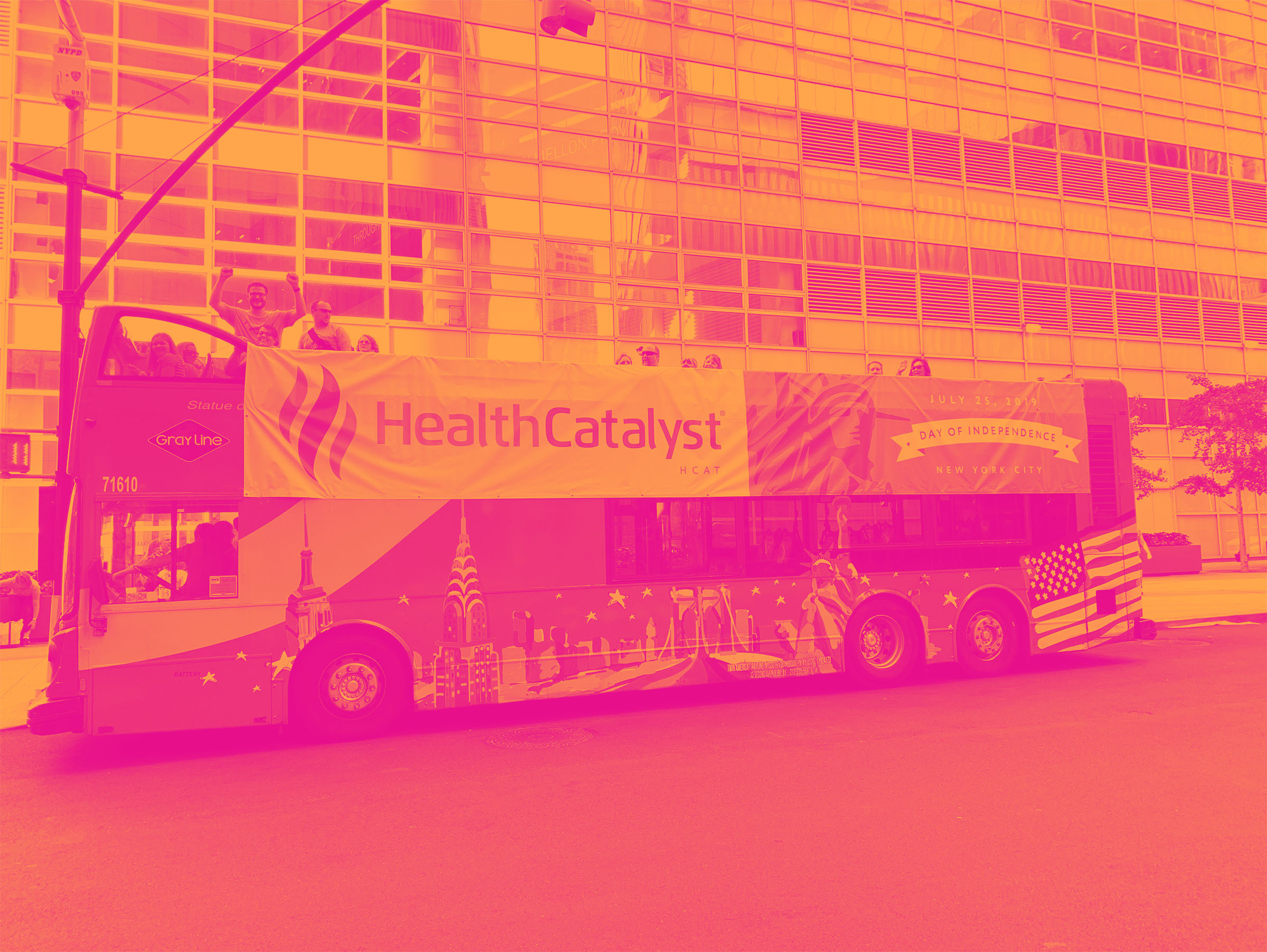
Healthcare software provider Health Catalyst (NASDAQ: HCAT) met Wall Street’s revenue expectations in Q2 CY2025, with sales up 6.3% year on year to $80.72 million. On the other hand, next quarter’s revenue guidance of $75 million was less impressive, coming in 12% below analysts’ estimates. Its non-GAAP profit of $0.04 per share was in line with analysts’ consensus estimates.
Is now the time to buy HCAT? Find out in our full research report (it’s free).
Health Catalyst (HCAT) Q2 CY2025 Highlights:
- Revenue: $80.72 million vs analyst estimates of $80.57 million (6.3% year-on-year growth, in line)
- Adjusted EPS: $0.04 vs analyst estimates of $0.04 (in line)
- Adjusted Operating Income: -$3.34 million vs analyst estimates of -$12.9 million (-4.1% margin, 74.1% beat)
- The company dropped its revenue guidance for the full year to $310 million at the midpoint from $335 million, a 7.5% decrease
- EBITDA guidance for the full year is $41 million at the midpoint, above analyst estimates of $40.53 million
- Operating Margin: -46%, down from -20.8% in the same quarter last year
- Market Capitalization: $199.2 million
StockStory’s Take
Health Catalyst’s Q2 results were met with a strongly negative market reaction, driven by management’s downward revision of revenue expectations and acknowledgment of significant headwinds. CEO Dan Burton highlighted that the company’s largest clients, particularly in the not-for-profit and academic medical sectors, are “reeling and looking for a way to plan for a new normal” following the unprecedented scale of Medicaid and research funding cuts. The company attributed revenue softness to clients delaying or reducing expansion spend, as well as a shift toward using Ignite migration cost savings to offset budget pressures. Management’s tone was notably cautious, with Burton explaining, “This is the largest cut in history to Medicaid. It is a huge reduction and something that will take some time for everyone in the ecosystem to really better understand.”
Looking ahead, Health Catalyst’s guidance reflects persistent headwinds from healthcare funding reductions and a conservative view of client spending behavior. Management’s outlook assumes continued delays in life sciences contracts, smaller average deal sizes for new clients, and sustained pressure in the professional services segment. CFO Jason Alger stated that while revenue forecasts have been lowered, the company remains focused on expanding profitability, supported by restructuring efforts and efficiency initiatives such as increased use of AI and shifting resources to India. CEO Dan Burton emphasized that “expanding our applications revenue will continue to be the primary focus of our growth organization in the months and years ahead,” with particular attention to cross-selling higher-margin solutions into the existing client base. The company does not expect a rapid recovery, instead viewing any pickup in client activity as upside to current forecasts.
Key Insights from Management’s Remarks
Management attributed Q2 performance to a combination of technology segment growth, delays in client expansion, and proactive restructuring to improve profitability. The downward revision in full-year revenue expectations was primarily driven by customers’ reactions to federal funding cuts.
- Technology segment growth: The Ignite platform and applications portfolio delivered year-over-year growth in the technology segment, though migration-related savings led clients to reduce their overall spend, creating near-term revenue headwinds.
- Professional services restructuring: Health Catalyst accelerated efforts to exit or restructure unprofitable contracts, especially within its services segment, which reduced revenue but improved overall profitability by increasing margins.
- Life sciences delays: The Carevive business, which serves the life sciences market, saw a slowdown due to research funding cuts, resulting in delayed deal signings and lower revenue contribution. Management removed these potential deals from forecasts, considering any closures as upside.
- Revenue mix shift: There is an ongoing focus on expanding high-margin application revenue, which management estimates has grown over 20% year-over-year and now produces gross margins above 80%. The company expects continued mix shift toward these products.
- Workforce reduction and cost control: Health Catalyst implemented a restructuring that impacts about 9% of its workforce, alongside non-headcount cost reductions, aimed at driving more than $40 million in annualized profitability improvement and supporting sustained margin expansion.
Drivers of Future Performance
Health Catalyst’s guidance is shaped by persistent healthcare funding headwinds, a cautious approach to new client growth, and a strategic pivot toward higher-margin application revenue and operational efficiency.
- Persistent funding headwinds: Management expects the impact of Medicaid and research funding cuts to be multi-year, with delayed client projects and lower average contract values likely to constrain near-term revenue growth.
- Profitability-focused restructuring: The company is prioritizing cost reductions, workforce realignment, and renegotiation or exit of lower-margin contracts. These actions are intended to support adjusted EBITDA margin expansion, with Q4 2025 margins expected to approach 20%—well ahead of prior long-term targets.
- Applications revenue expansion: Health Catalyst is concentrating on selling more applications, which generate the highest gross and EBITDA margins. Management expects continued double-digit growth in this segment, supported by cross-selling to its existing client base and leveraging its Ignite infrastructure.
Catalysts in Upcoming Quarters
In upcoming quarters, our analysts will watch (1) the pace and success of Ignite platform migrations and whether clients resume expansionary spending, (2) execution of the company’s restructuring plan and progress toward EBITDA margin targets, and (3) the trajectory of application revenue growth, especially cross-sell rates within the existing client base. The degree to which clients adapt to the new funding environment will also be a critical signal for Health Catalyst’s recovery and future growth.
Health Catalyst currently trades at $2.84, down from $3.70 just before the earnings. Is the company at an inflection point that warrants a buy or sell? Find out in our full research report (it’s free).
High Quality Stocks for All Market Conditions
When Trump unveiled his aggressive tariff plan in April 2025, markets tanked as investors feared a full-blown trade war. But those who panicked and sold missed the subsequent rebound that’s already erased most losses.
Don’t let fear keep you from great opportunities and take a look at Top 9 Market-Beating Stocks. This is a curated list of our High Quality stocks that have generated a market-beating return of 183% over the last five years (as of March 31st 2025).
Stocks that made our list in 2020 include now familiar names such as Nvidia (+1,545% between March 2020 and March 2025) as well as under-the-radar businesses like the once-micro-cap company Tecnoglass (+1,754% five-year return). Find your next big winner with StockStory today.
StockStory is growing and hiring equity analyst and marketing roles. Are you a 0 to 1 builder passionate about the markets and AI? See the open roles here.


















